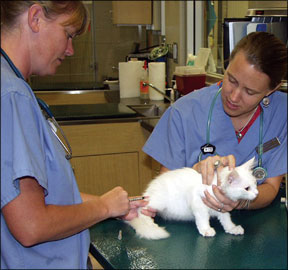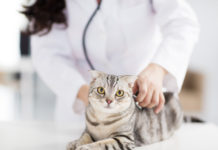Q: My veterinarian told me that new vaccination guidelines for cats will be coming out soon. Is that true? If so, when will they be available? Are there any changes?

288
I was very fortunate to have the opportunity to serve as chairperson of the panel; my task wasnt exactly like herding cats, but it did take us well over a year to create the report. The 12 advisory panel members, all hailing from universities and private practices in the United States, Canada and the European Union, cheerfully donated countless hours of time, sharing their experience and knowledge of feline infectious disease, internal medicine, immunology, epidemiology, shelter medicine and clinical practice. The panel relied as much as possible on the growing number of applicable studies published in peer-reviewed journals, but when such information was unavailable, it relied upon the extensive experience of the panelists and results of as-yet unpublished studies. Needless to say, opinions differed on a number of issues, such as the age at which the “kitten” series should be concluded (12 weeks or 16 weeks?) and how often FeLV vaccines should be boosted in adult cats. But after careful consideration of all points of view and existing information, the panel unanimously stands behind the recommendations contained in the report.
So what can veterinarians expect? New are sections on vaccination in shelters, vaccination of cats in trap-neuter-return programs and of kittens in socialization classes, and vaccine administration tips. But much will be familiar. Vaccines are again classified as core, non-core, or not generally recommended. There are updated sections on the types of vaccines currently available (killed, modified-live and recombinant) and routes of administration (by injection, as nose drops and transdermally, using a specially designed administration device), immune responses to vaccination (including information on the duration of immunity that a vaccine induces), laboratory tests to predict immunity and the need for booster vaccination, applicable legal and regulatory considerations, and adverse events and reporting. Administration of injectable vaccines in specific sites on the body (specifically avoiding the area between the shoulder blades) continues to be advised.
Of major interest is the section on each of the infectious diseases for which vaccines exist. Included are descriptions of each of the ten agents, how theyre transmitted, how diagnosis is obtained and the cats most at risk of infection and disease. Also included for each of the infectious diseases are discussions of the vaccine formulations available and what theyre each expected to accomplish, along with any recognized adverse reactions. Panel recommendations for vaccine use are given for each infectious agent, with the most important material summarized in table form for easy access.
Changes are taking place rapidly in feline vaccinology. Vaccine manufacturers have responded to many of the recommendations and concerns expressed in previous reports (in 1998 and 2000), including:
- Licensing of panleukopenia (feline distemper), feline herpesvirus and feline calicivirus vaccines with proven duration of immunity of at least three yearsFunding of studies investigating the duration of vaccine immunity in the “real” world, not just the laboratoryDevelopment of vaccines that create less inflammation at injectable vaccination sitesProduction of vaccines with smaller dosage volumesDevelopment of novel methods of vaccine administration
Because of the changes taking place, the AAFP Feline Vaccine Advisory Panel Report should be viewed as a living document subject to modification as new vaccines and new information come forth. The Cornell Feline Health Center and the AAFP remain committed to helping veterinarians provide the best care possible to cats and the people who love them, and we are proud to present this report to the profession. v



